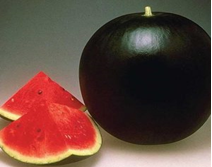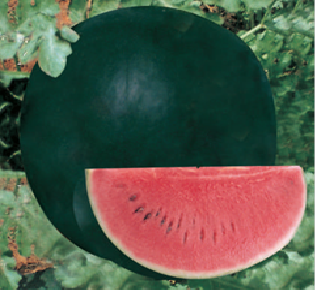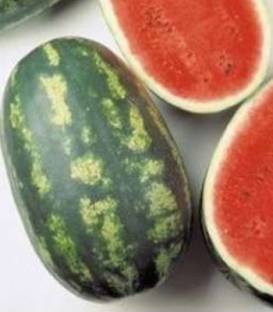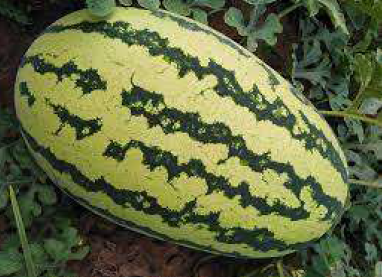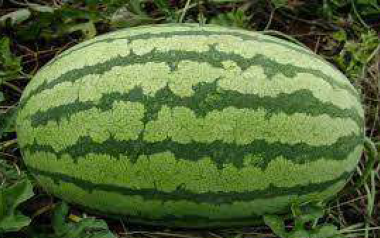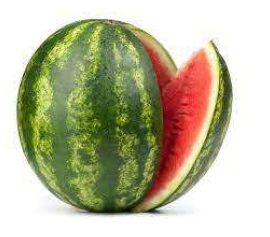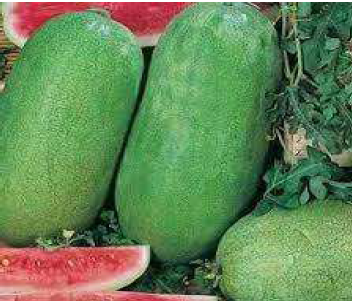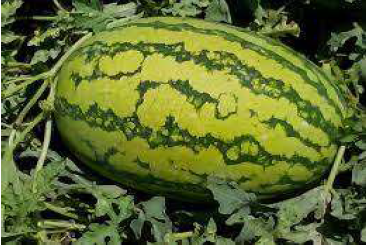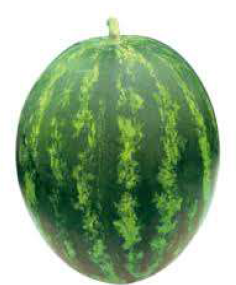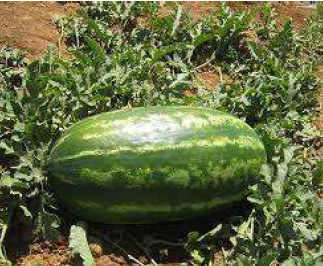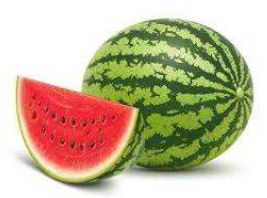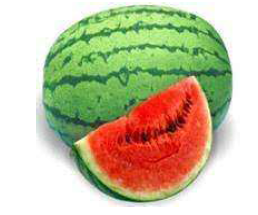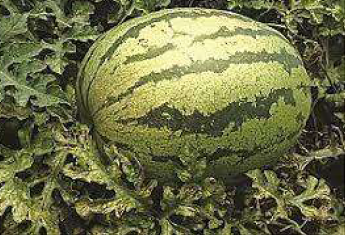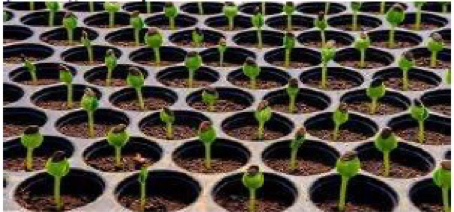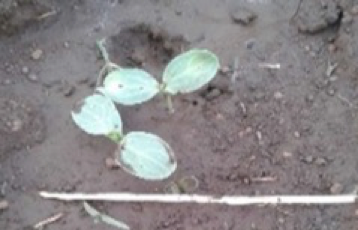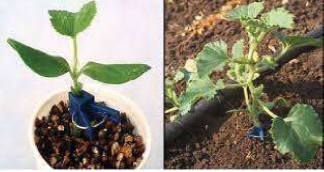Water Melon
Watermelons (Citrullus lanatus) are large round fruits that thrive very well in dry areas. Some varieties have seeds while others are seedless. The fruits are generally eaten raw They are a good source of water but can also be used for making jams, other preservatives, flavouring in drinks and smoothies. They are quite nutritious, for instance, one cup serving of watermelon can provide calories, vitamin C, vitamins A, B6, B1 and minerals such as potassium, magnesium, antioxidants among others.
|
Pata Negra F1
Source: mallagro.com |
|
|
Augusta F1
|
|
|
Sentinel F1
|
|
|
Fahari F1
Source: syngenta.co.zm |
|
|
Sugar baby |
|
|
Sukari F1
Source: famunera.com |
|
|
Crimson sweet
Source: alabama.com |
|
|
Charleston gray
Source: americanseedco.com |
|
|
Asali F1
|
|
|
Anita F1
Source: kangarooseeds.com |
|
|
Farao F1
|
|
|
Astrakhan
Source: ebay.com |
|
|
Julie F1
Source: smartfarmingug.com
|
|
|
Sweet Rose F1
agroduka.com |
|
|
Zuri F1
East African Seed Co. |
|
Watermelons require long, warm growing periods. Bright, hot days (27 – 35°C) and warm nights (16-21°C). Altitudes of upto 1000m are ideal. Well drained sandy loam soils with a pH of 5.0 to 7.5 are best suitable. Seed rates: of 1.5-3.0kg/ha
Manures: Apply 2-3 shovels per hill or spread 20 or more tons/ha and work it into the soil.
Phosphate: Apply 10-12g (1 teaspoonful) of Phosphate fertilizer with 46% P2O5 such as Double superphosphate or Triple superphosphate per hill before planting. About 150-200kg/ha will be required. Nitrogen: Apply 1 teaspoonful (10g) CAN after thinning and similar amounts just before flowering. A total of 200-250kg/ha Calcium Ammonium Nitrate (CAN 26%N) will be required.
|
Tray sowing
Source; bhg.com.au |
|
|
Direct seed sowing
|
|
|
Seed pre-germination technique
|
|
|
Use of cuttings
|
|
|
Propagation by grafting
Source: dreamstime.com
|
|
Identification of disease-free areas for production of healthy watermelon seeds.
- This management practice involves the selection of suitable area or field for cultivation of watermelon for disease-free seeds and better yields.
- Healthy seed production is advisable in areas and seasons where disease does not appear.
- Many fungal and bacterial diseases are more severe in wet areas than in dry areas.
- It is also advisable not to use the same field for cultivation of watermelon year after year.
- Selection of same field may aggravate, for example, phytophthora blight, and Alternaria leaf spot.
- The drainage in the field is also important since low-lying, waterlogged conditions favour most fungal diseases such as damping off.
- Prepare field to a fine tilth by ploughing and harrowing.
- Mark out planting hills after spacing of 2.0-2.5m for single row system and 3.5-4.0m for double row system.
- Plant spacing of 60cm is recommended.
- Apply manure and Phosphate fertilizer and work it into the soil.
- Sow 2-3 seeds/hill and thin out later to one seedling/hill.
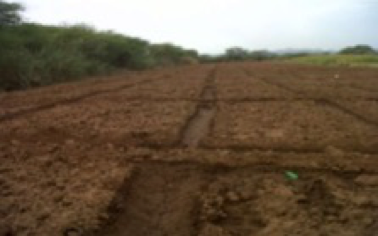
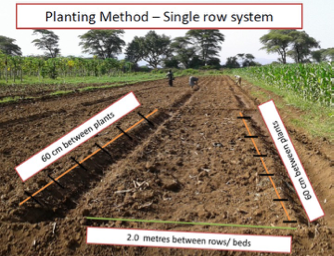
land preparation
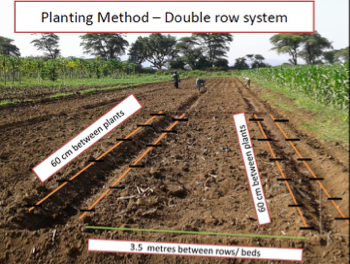
crop spacing (Source: jica.go.jp_
- Cross pollination is mostly through the Honey bee ( if keeping a bee hive recommended 3-5 hives /ha.
- Early–mid morning (9am- 12pm) best time for pollination thus avoid chemical spraying morning during flowering stages as insufficient pollination results in shape deformation of the fruits.
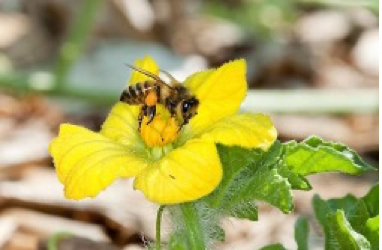
Honey bee pollination
- Changing crops routinely allows the land to remain fertile, since not all of the same nutrients are being used each season.
- For example, planting a legume, such as soybeans, helps to replenish necessary nitrogen in the soil.
- Crop rotation can help to manage your soil fertility reduce soil erosion, improve your soil health and increase nutrients availability to plants.
Weed free crop
- Weeds cause economic loss in watermelons by: Competition for nutrients, water and light.
- Weed foliage may prevent proper contact of fungicides and insecticides with watermelon foliage and fruit.
- Weed leaves slow harvesting and also create imprint/defects that reduces quality of fruits.
- Mechanical removal of weeds is the most effective control for weeds.
- Cultivation between rows should be shallow to avoid injury to the root system.
- Mulch provides excellent weed growth over the plant rows. Watermelons are very susceptible to herbicide damage especially when the plants are small.
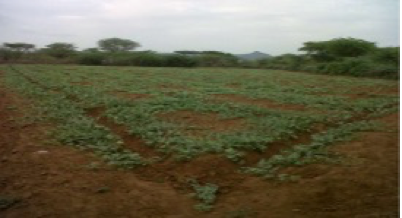
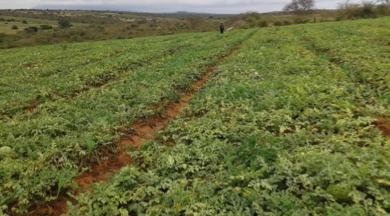
Plant pruning
- It is a management practice where the number of running vines are restricted to two to three and also limiting the number of subsequent lateral branches.
- It is aimed at reducing the number of bearing vines in order to maximize on the size and quality of fruits produced.
- Farmer should aim at 4 to 6 fruits per plant to ensure large fruits often demanded by the market.
- This can be achieved by restricting the number of fruits per lateral branch to 1 or 2 depending on the health of the plant.
Plant training
- It is a management practice where the two running vines and associated lateral branches are directed to grow in a direction away from the paths and irrigation channels.
- If under a trellis system, the two to three running vines and associated lateral branches are directed to grow along the trellises.
- In the dry areas measure to conserve water should be taken to ensure the water melon crop has enough water to grow.
- The measure that can be taken include: Zai pits, Bench terraces, Fanya Juu terraces, Stone lines, Retention ditches, Grass strips, and Tied ridges /Ridging /Earthing.

- Zai pits combined with stone lines
- Bench terraces,
- Fanya Juu
- Grass strips
Water harvesting measure include;
Rain water harvesting systems (ponds, dams and roof catchment).
Conservation agriculture include;
Mulching, Intercropping or drip irrigation system.

Drip irrigation
- The technology that supplements water in crop production systems.
- It allows the optimal usage of the limited water resource by dripping water slowly into the crop roots at low pressure through a number of emission points (drippers).
- Drip system saves water by minimizing evaporation losses and delivering water at the root zone where it is required.
- It also provides the opportunity for farmers to increase crop yields. It’s easy to design and operated. The layout can either be above surface or buried below the surface.

Layout of a drip irrigation system in vegetables.
Farm yard manure FYM: 12-20 tons/ha
Basal: 5 bags of NPK 17:17:17 or 3.5 bags DAP & 2 bag MOP
Top Dress:
1 st: 2.5 bag CAN @ 25 Days after Planting
2 nd: 2.5 bag CAN @ 45 Days after Planting
Micronutrients: Ca, Bo & Mg spray at the Vegetative, flowering and fruit setting stage
Diagnosing crop nutrient deficiency in watermelon
Rapid soil testing services
- This is a dry method for soil testing using simplicity of light—the interaction of electromagnetic radiation with matter to characterize biochemical composition of a soil and/or plant tissue.
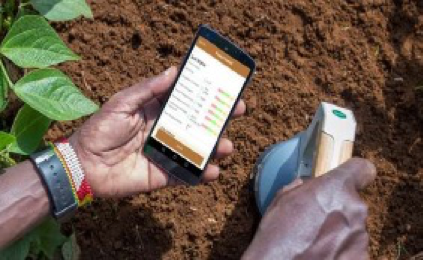
- Handheld scanner and mobile app monitoring soil nutrients.
- It requires partners involvement (ICRAF, iSDA and AgroCares) to work closely with KALRO and County agricultural officers to sensitize farmers to embrace the testing method.
Scouting techniques and frequency to determine the presence of the different types of pests, diseases and their respective severities in order to make a decision on the control measures to be undertaken.

- Organic amendments to the soil are traditionally used for improving soil conditions and crop productivity, but they can also aid in suppressing soilborne pathogens.
- Composts and liquids enriched with essential oils, phenols, organic acids and many other biocidal compounds from herbs could be effective against soilborne diseases, although the use of these soil amendments is rare.
- Organic manures made up of organic wastes, composts and peats, have been proposed to control soilborne diseases and pests. R. solani, Thielaviopsis basicola, V. dahliae, species of Fusarium, Phytophthora, Pythium and Sclerotium are found to be managed effectively by the application of organic amendments.
- These organic amendments not only improve soil structure and increase water holding capacity, they also support other beneficial microorganisms which help to suppress soilborne pathogens.
- The increase in activity of microorganisms in the soil creates competition, which may lead to effective suppression of harmful soilborne pathogens.

Integrated Weed Management (IWM) is the management of weeds using two or more appropriate approaches including preventive, planting in a weed free prepared land, use of mulch (biodegradable or synthetic), cultural, rotation, intercropping and chemical control depending on the weed types infesting the field.
Cultural control includes:
Transplanting rather than direct planting, proper fertilization, irrigation, use of cover crops and plastic mulch to reduce weed populations. Transplanting is done 3-4 true leaves plants. Watermelon transplants develop more rapidly than direct seeded because these increases early season competitiveness of water melon and may suppress weed emergence due to rapid canopy development particularly in rows.
Fertilizer may affect weed populations since Watermelons roots reach middle of rows rate in season: So, broadcasting fertilizer early in season fertilizes the weeds in middle row. Drip irrigation and fertilizer in the root zone reduces amounts of fertilizer to weeds.
Raised polyethylene plastic beds with drips prevent weeds in rows and allow irrigation and fertilizer to crop root zone.
Types of weeds
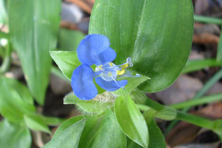
Wondering jew sow thistle
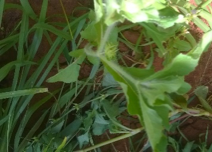
Double thorn
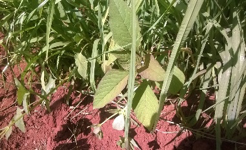
Pigweed
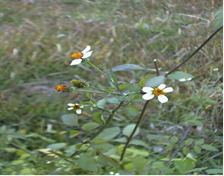
Black jack Goat weed
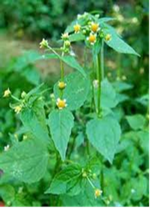
Gallant soldier
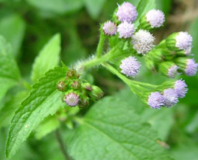
Chickweed
Physical control include:
- The removal of weeds manually or by mechanical means, such as hand weeding or mowing. In manual weeding farmers carry out manual weeding at 2-3weeks depending on environment, weeds present, rainfall or soils.
Chemical control:
It is where appropriate recommended herbicides are applied to control weeds following the label. The weed composition needs to be identified and the data used to implement timely and the best management approach.
Chemical Control:
Chemical weed control refers to any technique that involves the application of herbicide to weeds or soil to control the germination and growth of the weed species.
Herbicide weed control is a technology that requires intensive knowledge on herbicides required for specific watermelon, when to apply and how application is done.
Solarization Bed Control:
It is where you use transparent polythene and hot temperatures months to increase temperatures to kill weed seeds and seedlings. Basic phenomena is building up of lethally high temperatures in top soil where most dormant and viable seeds are present.
Mechanism possible is breaking dormancy of weed seeds and solar scotching of emerged weeds and direct killing of weed seeds by heat.
Stale seed bed Control:
Stale seed bed “false” is where seeds are allowed to germinate by rainfall or wetting and killing them (1-2flushes of the weeds) before sowing the Clean certified Watermelon variety seeds.
They are killed using glyphosate, sulfosate and glufosinate. At this stage shallow or use of non-residue paraquat maybe used to destroy dense flush of young weed seedlings.
Mechanical Control
There are several forms of mechanical weed control as described earlier ranging from handheld tools to the most advanced vision-guided hoes. Hand hoeing may be used to control weeds in small-scale farming as it is less safe to use herbicides in home gardening due to the lack of training.
Maturity
Water melon is ready for harvest when:
- Tendrils near fruit stem have changed colour from green to brown and dry. Tendrils are small curly appendages attached to the fruit stem slightly above the fruit.
- Ground spot on the belly of the melon (where the melon has been resting on the soil) has changed from white to cream or pale yellow.
- The fruits when thumped with the finger produce muffled dull tone (immature fruits produce clear metallic ringing tone).
- The rinds become hard to pierce with finger nails.
- Mature fruits have sweet flavor, crisp texture and deep red colour.
- Sugar content (measured as soluble solids by use of hand held refractometer) of 10% or more in the flesh near the centre of the melon.
- Harvesting generally begins about 30 days after full bloom (3-4 months after planting), depending on the variety.
Main harvesting stages:
- Mature but before full ripeness for distant markets.
- Mature and ripe for nearby markets.
Fruits are ready for harvesting from 80 to 100 days from sowing. Harvesting continues for a further 40-50 days.
Harvesting method
- Manual harvesting is the most common practice in Kenya. This is done by cutting the vine with a sharp knife, and NOT pulling, twisting or breaking off the vines. This avoids damage to the stem which causes stem end rot.
- About 2.5 cm length of stem should be left attached to the fruit when it is cut from the vine to deter against stem end rot.
- Water melons do not ripen after they are picked off the vine, so harvest time is important. If harvested immature, red colour will develop but sugar content does not increase after harvest
- Shading is necessary in order to protect harvested watermelon from direct sunlight which causes sunburn.
- Due to differences in pollination time, not all watermelons mature at the same time. Thus, the same field may be harvested more than once.
- Due to their large size and susceptibility to splitting or cracking under mechanical stress, watermelons should not be harvested in the early morning when they are most turgid.
- Using a damp cloth, manually rub off the soil attached to the ground spot
Yields: 10-15 tons/ha.
Field assembling and packing
- After harvesting, watermelons are stacked in the field, on the side rather than on their blossom end to reduce the risk of cracking. Placing them in a shaded area will minimize build-up of heat and avoid quality deterioration. The watermelons are packaged in fibreboard boxes or bulk loaded in bins in the field, taking care to load only dried rather than dew-covered fruits.
- Water melon are commonly shipped in bulk, placed on corrugated bins with a capacity of approximately 400 kg, or packed into cartons containing 3 to 6 watermelons depending on fruit size, and these cartons should have specially designed inserts to help support the weight of the fruit.
- Large sized watermelons are usually put in rows in the field prior to being picked up with a transport vehicle. Alternatively, a group of workers can go through the field and toss the melons from one worker to the next, eventually arriving to the person on the transport vehicle.
- Fruits of small sized cultivars (i.e. less than 5 kg) can be put in strong wooden field containers and carried out of the field. Usually 3 to 5 fruit are put in a field container. Field sacks should not be used for transporting the fruit out of the field, since they do not provide protection against bruising injury.
- Watermelons may be loaded directly from the field into the bed of a truck or trailer and transported to the market. This is essentially a form of field packing.
- Watermelons destined for export are taken in bulk from the field to a collection site for grading and packing. Workers should unload the fruit with care and place them on a packing table where other workers sort them into more precise size groups and pack them. Table surfaces should be covered with a non-abrasive material, such as carpet, to help avoid scratching the fruit.
- Watermelons packed for export should be put in strong double-walled corrugated cartons containing 3 to 5 watermelons, depending on fruit size and shape. The cartons typically weight between 25 to 35 kg. The carton should be stacked properly to permit adequate airflow through the load during transport.
Control of postharvest diseases
- Fungal diseases are: black rot, anthracnose, phytophthora fruit rot, Fusarium and stem-end rot)
- Bacterial diseases are soft rot
Postharvest decay of harvested watermelon
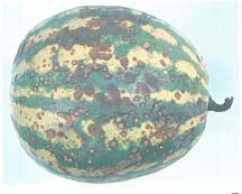
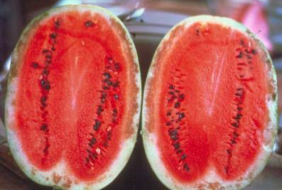
Anthracnose decay of watermelon fruit (Source:Suslow, UC Davis)
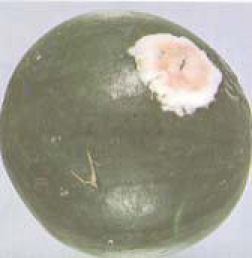
Fusarium rot on ‘Sugar Baby’ watermelon
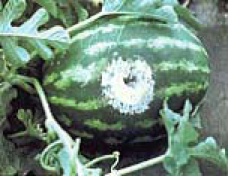
Greasy spot and associated whitish mold growth of Phytophthora infected fruit
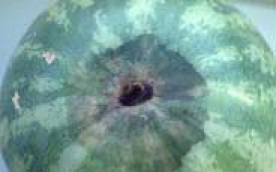
Stem-end rot
Control
- Careful sorting at harvest (discarding defective watermelon) and appropriate fruit grading before shipment
- Holding fruits at 10oC will slow down the rate of disease development, compared to ambient temperature storage.
- Spray with copper fungicides or systemic fungicides
- Minimizing bruising of watermelon
Sorting and grading
Sorting
- Watermelons are sorted to remove insect damaged, blossom-end rot, cracked, discolored, without stalk attached
- Inferior melons are sorted and packed in large, sturdy, tri-wall fiberboard containers.
Grading:
- Watermelon are graded based on their external appearances which include size (small, medium and large) for each variety. Good quality watermelon should be uniform in appearance and having a waxy bright surface devoid of scars, abrasions, sunburns, decays and other surface defects. Defecting fruits as a result of stacking or fruits dropping on the floor mistakenly can be sold at a cheaper price in nearby markets.
- Preliminary grading of market quality fruit should be done in the field at the time of harvest. Deformed, insect damaged, partially decayed, or cracked fruit should not be loaded or transported to the market.
- Watermelons destined for export must meet the quality standards established by the receiver. Typically, the fruits are more carefully inspected than those intended for the domestic market. The presence of diseases, insects, or soil can result in failure to meet phytosanitary requirements at the destination and lead to rejection of the entire shipment.
- In addition to the external appearance, randomly selected fruit should be cut open and checked for internal quality. The edible flesh should have a sugar content (minimum of 10% soluble solids), a deep red colour, and a pleasant crisp texture. These quality characteristics are dependent on fruit maturity, cultivar and postharvest care.
Fruits ready for the market after sorting and grading
- Storing watermelon at cool temperatures to extend shelf life. If cut open, wrap it tightly in plastic and store in the refrigerator. An open watermelon can last for about 4 days in this condition.
- If you are going to transport the watermelon fruits to a distant market, store the watermelons in a refrigerating van at 7.2oC with 85-90% relative humidity. However, holding watermelon at this temperature for too long will induce chilling injury to the fruit. If you transport the watermelons to the market without pre-cooling, or refrigerating during transit, then the fruits must be consumed immediately as quality declines rapidly under these conditions.
- Avoid storing watermelons with apples and watermelons as they produce ethylene while in storage that softens and changes the flavor of the watermelon
Zero Energy Brick Cooler
The Zero Energy Brick Cooler consist of a double brick wall filled with sand in between, and a storage chamber. The sand is kept moist with water. The inside chamber is cooled through evaporation of the water in the sand.
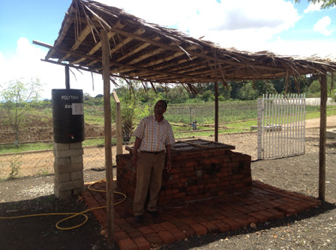
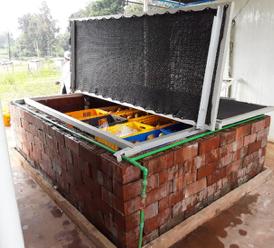
Zero Energy Brick Cooler
Evaporative Charcoal Cooler
The Evaporative Charcoal Cooler consist of a double brick wall filled with charcoal in between, and a storage chamber. The charcoal is kept moist with water. The inside chamber is cooled through evaporation of the water in the charcoal.
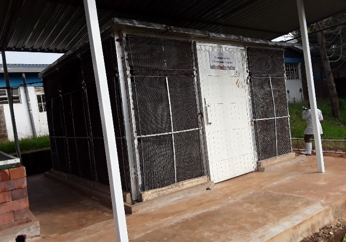
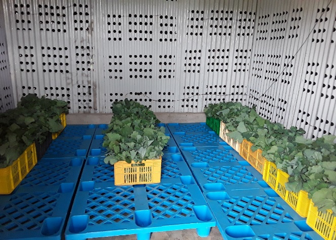
Evaporative charcoal cooler for fruits and vegetables
Minimally processed products (slices, salads): Watermelon slices packed in punnets and cling film wrappings

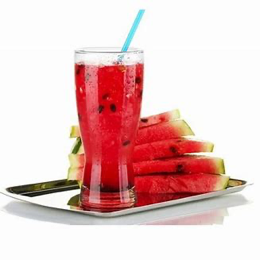
Source: th.bing.com
Watermelon wine: Wine prepared from ripe watermelon. It is made by fermenting watermelon juice by adding wine yeast and sugar.
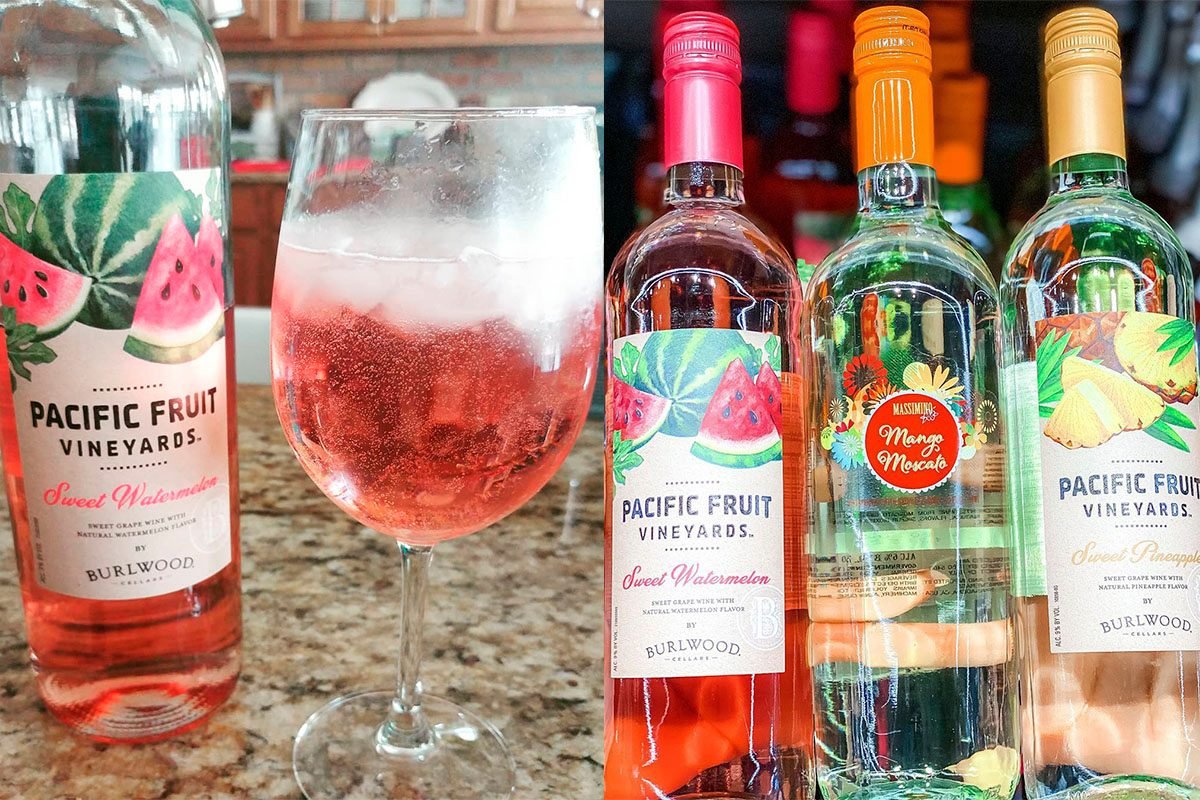
source tasteofhome.com,
Watermelon jam: Jam prepared from ripe watermelon
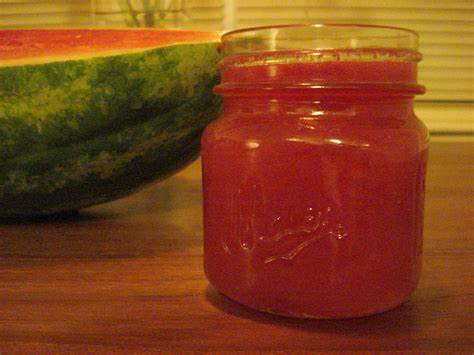
Source casaruraldavina.com
Watermelon powder: Powder prepared from drying watermelon juice
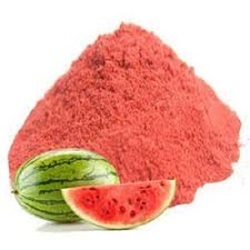
Watermelon flour: Flour prepared by grinding dried watermelon seeds

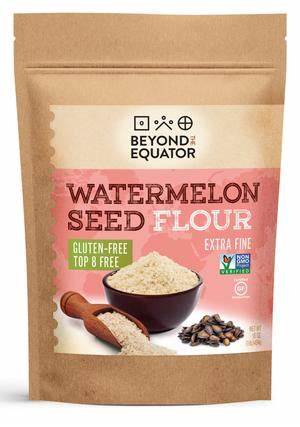
Source beyondtheequator.com
Watermelon seed oil Edible oil extracted from dry watermelon seeds
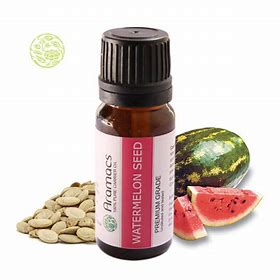
http://www.essentialoil.in/
water melon candy
sweets made from dried watermelon
